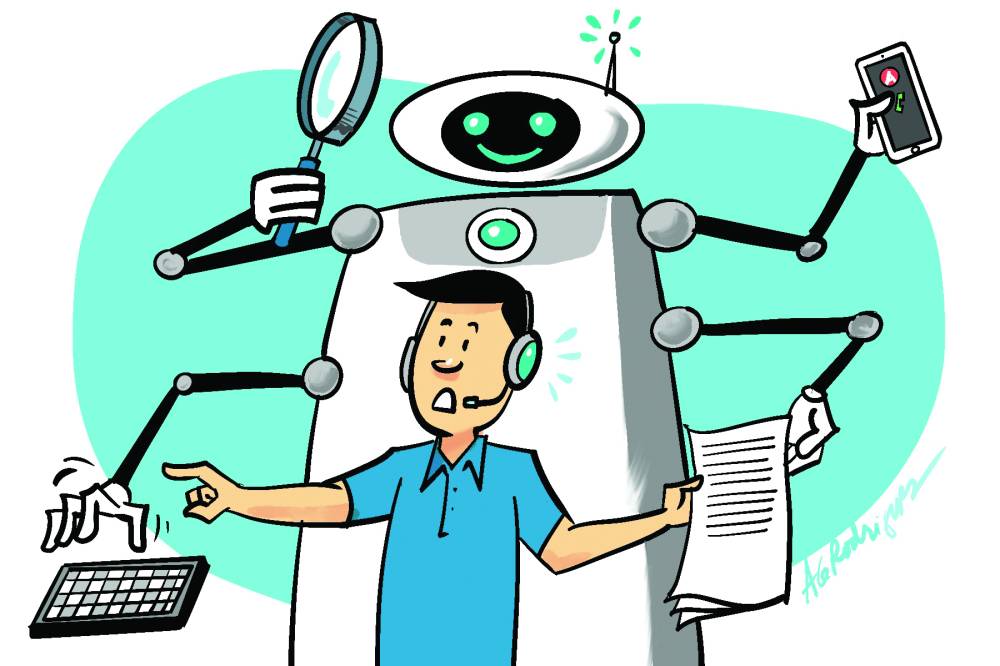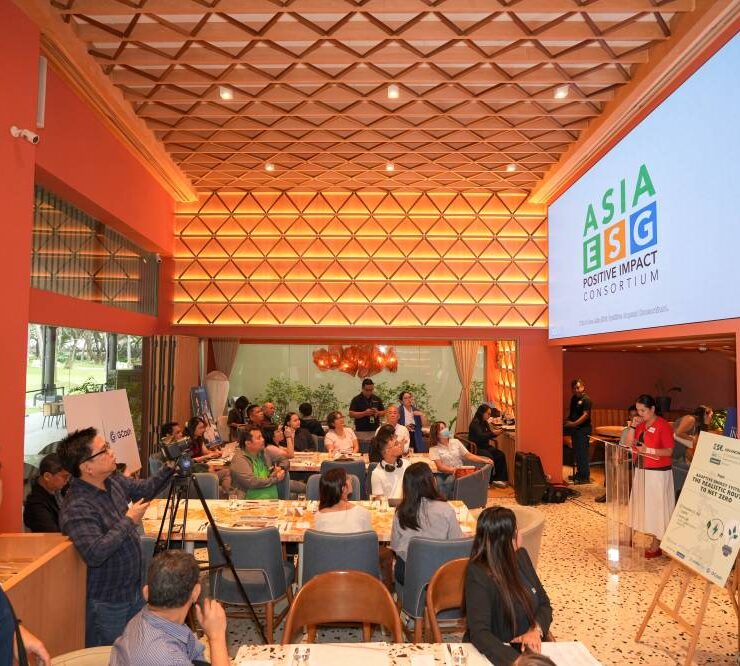It’s here: Equipping Filipino workers for AI

A hybrid workforce—where humans and artificial intelligence (AI) agents work together—combined with prioritizing measures to empower workers is crucial to offset technology-related job displacements.
The United Nations Trade and Development (Unctad) says that AI is “a prominent force that can transform economies and create vast opportunities.” But it also cautions that AI could impact 40 percent of jobs worldwide. In its 2025 Technology and Innovation Report, the Unctad adds that the global AI market is expected to reach $4.8 trillion in market value by 2033.
“However, access to AI infrastructure and expertise remains concentrated in a few economies. Market dominance, at both national and corporate levels, may widen technological divides, leaving many developing nations at risk of missing out on its benefits,” it adds.
The Unctad proposes a more human-centric approach to counter the effect of displacement. “AI can be a catalyst for progress, innovation and shared prosperity… This means shifting the focus from technology to people, putting people at the center of AI development,” the report adds.
Upskilling essential
In the Philippines, the Department of Labor and Employment (Dole) underscores the need to upskill workers amid AI adoption to safeguard employment and labor rights.
“As AI reshapes industries and creates demand for new skills, we must focus on initiatives that foster adaptability and competitiveness. This includes comprehensive training programs centered on digital literacy and AI competencies to ensure that technology empowers workers rather than displaces them,” says Carmela Torres, Dole undersecretary for employment and human resource development cluster.
The International Monetary Fund (IMF) also adds in a 2025 report that 61 percent of occupations in the Philippines are “highly exposed jobs,” meaning their tasks can now be performed by AI.
Some jobs are also rated as “highly complementary” despite being highly exposed to technological disruption. This means that AI could help augment repetitive tasks rather than replace roles, which may lead to increased productivity.
Jobs with high exposure to AI and high complementarity include general and operations managers, first-line supervisors, teachers and teaching assistants, lawyers, civil engineers, and counselors.
Meanwhile, customer service representatives, telemarketers, accountants, auditors, secretaries, and administrative clerks are jobs classified with high exposure but low complementarity.
The key to creating a future-ready workforce is to view AI as a useful emerging technology that will augment the productivity of the human workforce. Business leaders across the globe are largely optimistic that AI can improve productivity and profitability in the long run.
PricewaterhouseCoopers’ (PwC) annual Global CEO Survey says that more than half of CEOs (56 percent) have seen GenAI (Generative AI) improve efficiencies in how employees use their time, while around one-third reported increased revenue (32 percent) and profitability (34 percent).
GenAI such as ChatGPT allows employees to spend less time on lower-value tasks and focus more on “higher-value strategic activities.” However, the report adds that there are also uncertainties surrounding AI adoption.
“Two key uncertainties will shape its near future: the level of trust in GenAI and whether its applicability and quality will improve in the short term. While some current use cases show promising results, widespread productivity impact requires time and experimentation,” the report says.
In order to build trust, organizations must adopt responsible and ethical AI principles for transparency and risk mitigation. In the local setting, Dole is emphasizing the need for more human oversight with the use of AI.
Human oversight
A prime example of human oversight in AI technology can be seen in the reimplementation of the Metropolitan Manila Development Authority’s (MMDA) No Contact Apprehension Policy. The MMDA is now using CCTV cameras that are equipped with AI to spot possible traffic violations.
But MMDA Chair Don Artes says that not all violators flagged by AI will automatically receive a notice from the MMDA. The agency, he says, will still review the footage, admitting that AI could be at times “not flexible or too strict.”
In the private sector, Robinsons Retail is also utilizing AI tools to reduce errors associated with traditional price tags with the Digital Shelf Labels.
“We’ve upgraded to digital shelf labels that automatically update daily, saving store officers two hours of manual work each day. This ensures prices are always accurate and current, streamlining operations and enhancing efficiency,” explains Paul Wee Pasia, director of information technology and retail services for Robinsons Food Segment.
The technology was first piloted in The Marketplace at Edsa Shangri-La. Over the next few years, Pasia adds that there are plans to use the digital labels in other stores.
PwC suggests that companies must now focus on high-quality training to upgrade the skills set of employees who will be directly affected by technological disruption such as AI, emphasizing that organizations are responsible to support their workers and keep up with the changing technological landscape.
“Organizations have a key responsibility to support their workers to enhance their skills and help them keep up with today’s challenges and to remain relevant. Upskilling initiatives could empower employees with the tools to remain economically active even if their current positions disappear, in due course,” the report adds.





















